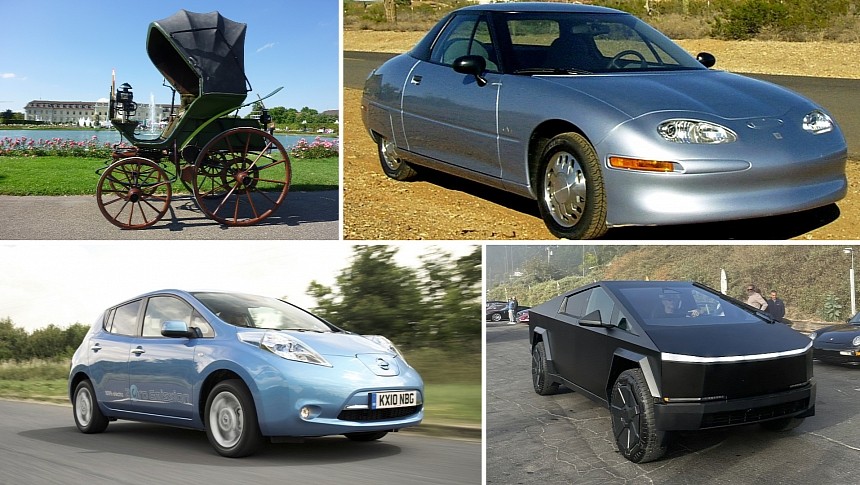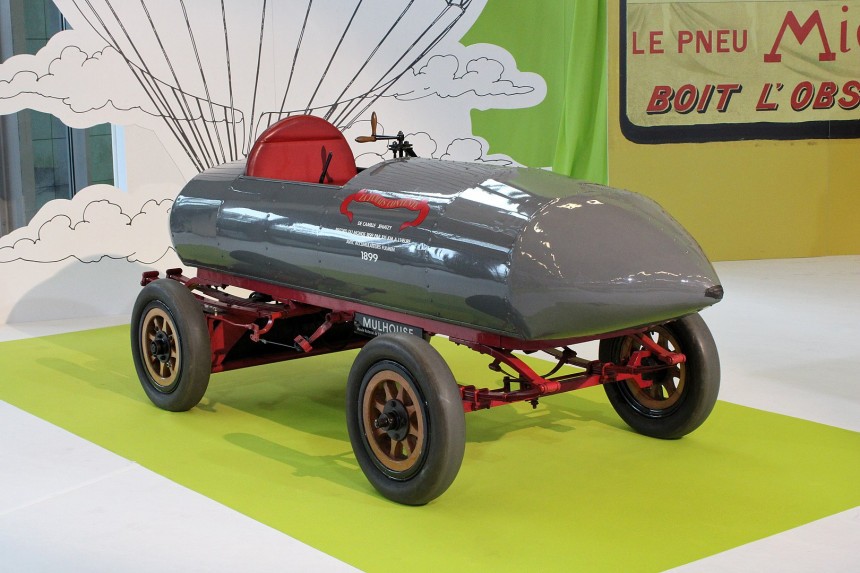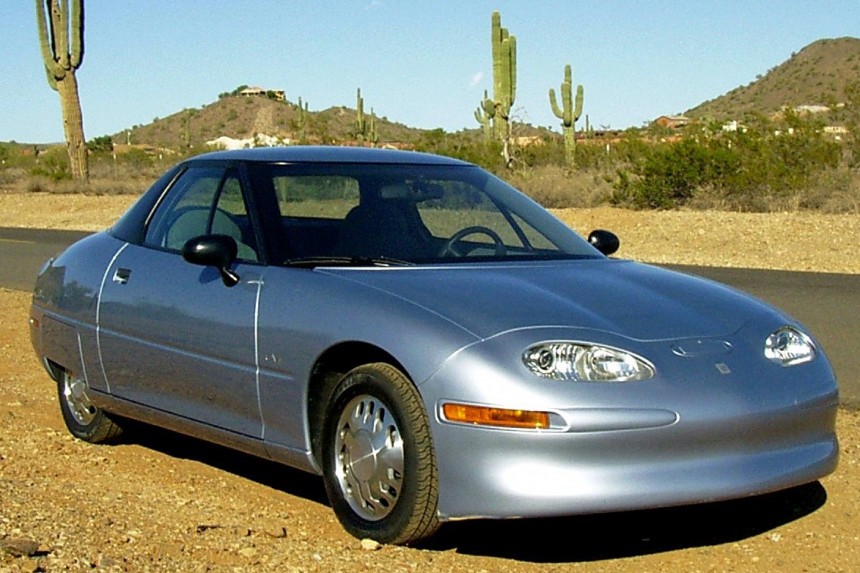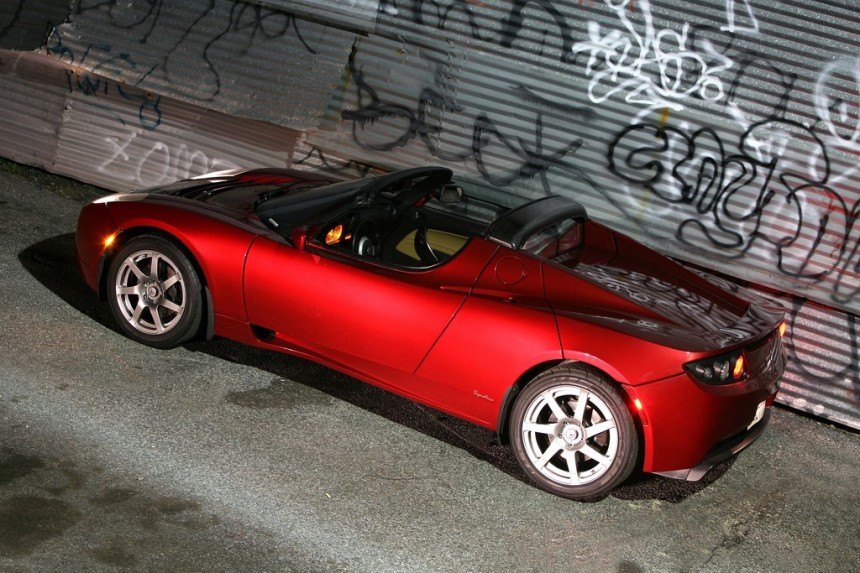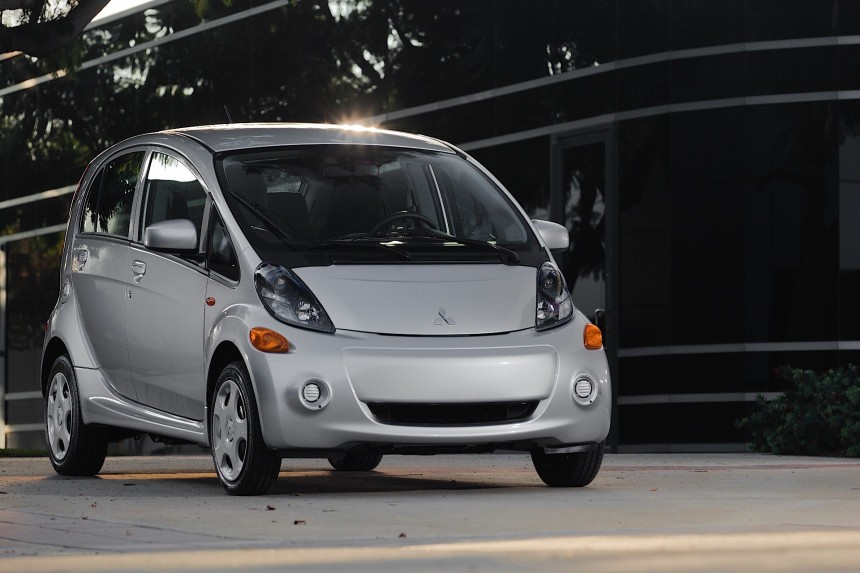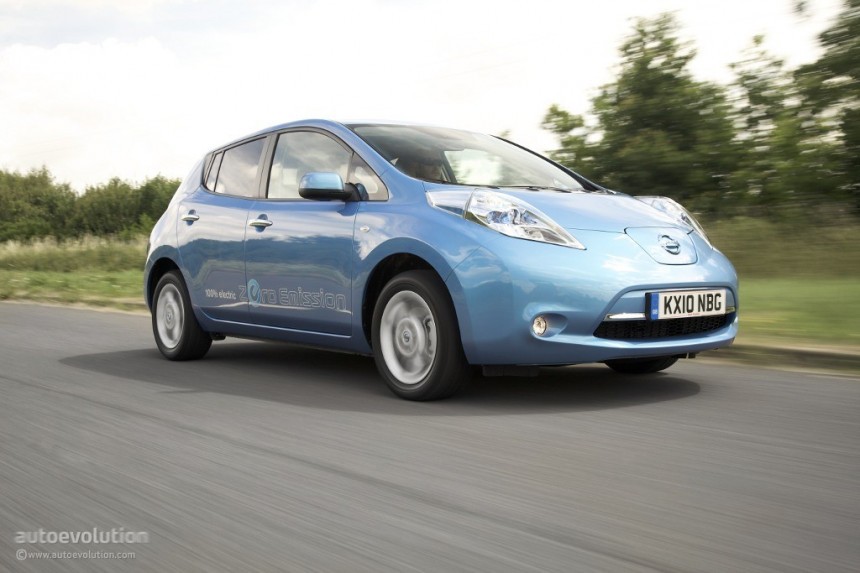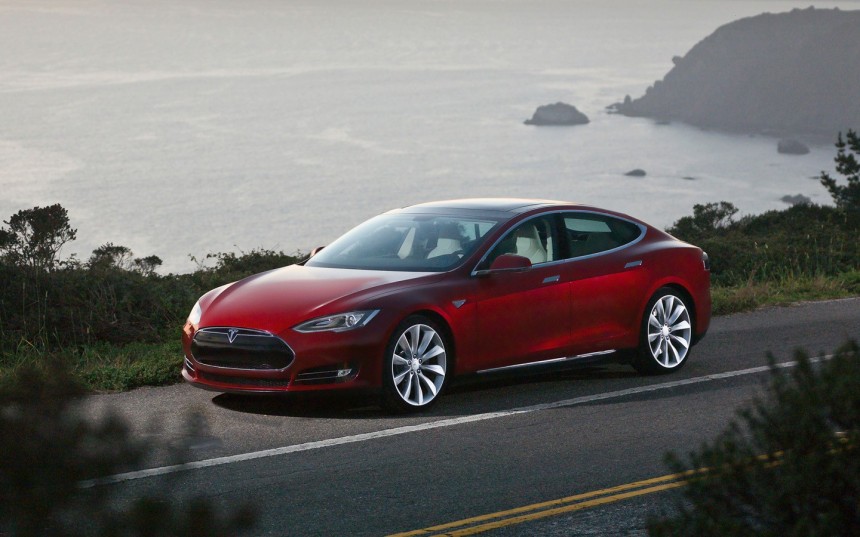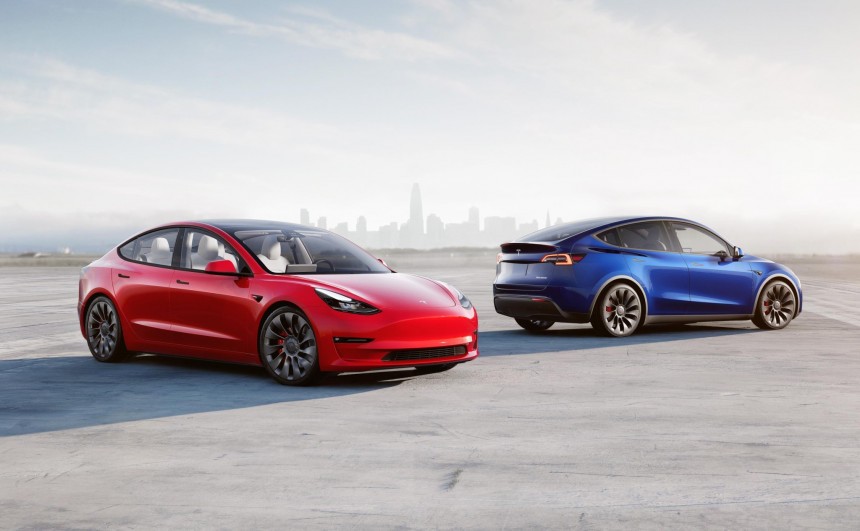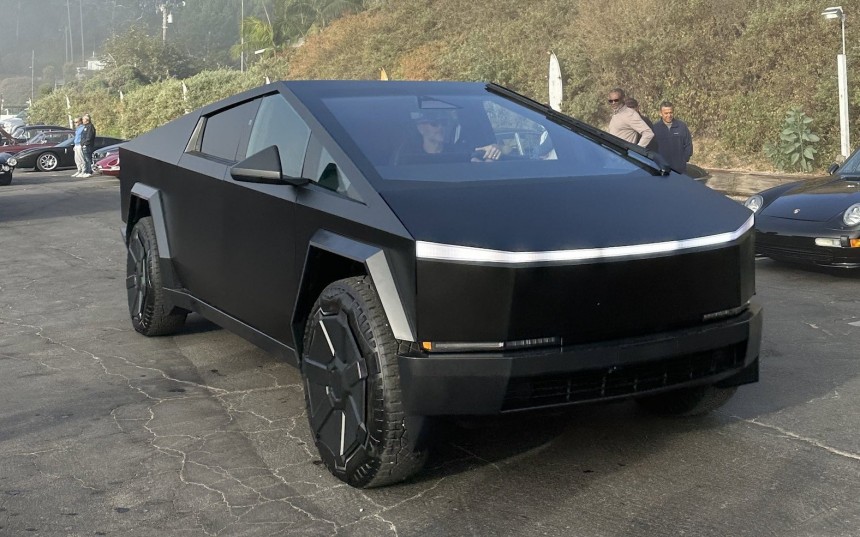Everyone is talking about the EV revolution nowadays, but whatever we're experiencing today has already happened more than a century ago. Will things be different this time, and the electric vehicle will take over the world? It's worth looking back to where everything started to see where we're heading. Here are the ten electric cars that put their mark on the automotive landscape.
Sometimes, history has a funny way of repeating itself. We're running in circles, and although the times, tools, and technology change, things are more similar than we're prepared to admit. When we see today's carmakers struggle to succeed in the EV era, it's worth remembering that others have faced the same dilemmas more than a century ago.
One example is how the limited range of the first electric cars led to the use of swappable batteries. This happened again at the dawn of the modern EV era, with companies like Better Place offering swappable battery packs. Heck, Chinese EV startup NIO is still trying to convince its customers that swappable batteries are the future of electromobility.
Electric cars in the late 19th century had a couple of significant advantages over their ICE counterparts. Comfort was one of them, as an electric car didn't need to be started by hand-cranking the engine. They were also far less noisy, and the limited range wasn't exactly an issue, considering that they were mostly used on short distances inside cities.
But things changed when the roads improved, the electric starter was invented, and gasoline cars were fitted with mufflers in the first years of the 20th century. Our ancestors faced the same problems we're familiar with today. The gasoline was cheap, filling the tank was fast, and range was not an issue. Economics also played an essential role in the dismissal of the electric car. While electric vehicles were becoming more expensive, gasoline cars were already affordable, thanks to Henry Ford.
Seeing how things are repeating today, it's interesting to see how things will evolve this time. Will electric vehicles become dominant, or will other propulsion systems steal the limelight once again? To understand this, it's time to relive the history, starting with the first electric car recognized as such, the Flocken Elektrowagen.
Some might say that it's unfair that the same country that claimed the invention of the automobile is also where the first electric car was produced. But the history is less clear in this regard, and we know there were self-propelled "things" (automobiles) long before Daimler Benz created its Patent Motorwagen in 1885. Likewise, other inventors designed (and built) electric cars before Andreas Flocken. I know, history is unfair to some and too generous to others, but that's it.
The Flocken Motorwagen looks a lot like the Daimler Motorized Carriage from 1886, only equipped with an electric motor instead of a gasoline one. It provided about 0.9 kW (1 horsepower), sent to the rear wheels using leather belts. The wooden vehicle could reach a top speed of 15 kph (9 mph), barely matching a horse carriage.
Andreas Flocken improved the design over the years. A two-seater from around 1903 can be seen today at the Deutsches Museum, sporting stub axle steering, spoked wheels with pneumatic tires, and ball bearings. It also had electric headlights, something considered groundbreaking at the time. However, that was the end of the line for the Flocken Elektrowagen.
The first electric cars were slow, clumsy contraptions that looked no different from a hose carriage. This was also true for gas-powered cars of the era, though. Car design was not on people's minds at that time. On the other hand, speed was, as going faster has been the main driver of technology since the dawn of humanity.
Things advanced quickly, and only ten years after the Flocken Electrowagen debuted, an electric car was the first road vehicle to break the 100 kph (62 mph) barrier. La Jamais Contente ("The Never Satisfied" would be a rough translation) was a torpedo-shaped automobile built by the Belgian engineer Camille Jenatzy. Jenatzy became known for his many record-breaking speed runs, earning him the nickname Le Diable Rouge (The Red Devil) thanks to his red beard.
Despite being fast, the Jamais Contente had a crappy aerodynamics, with the driver positioned high on the body and the exposed chassis underneath. To overcome this shortcoming, the car used two 25-kW electric motors, each driving the rear axle via a chain. They ran at 200 volts, providing a total of about 68 horsepower.
Despite this success, electric cars lost traction in the early years of the 20th century, although many electric trucks endured well into the 1920s. Surprisingly, the United States saw the biggest EV acceptance, with about 38% of automobiles being powered by electricity by the turn of the century. This is a lot different from today, when only about 8% of vehicles sold in the US are EVs.
After World War II, fuel-starved European countries started experimenting with electric cars again, but the progress was almost non-existent. However, in the late 1950s, a joint venture was formed between Henney Coachworks and the National Union Electric Company (the maker of Exide batteries) to produce a new electric car. The Henney Kilowatt was based on the Renault Dauphine and was produced in 36-volt and 72-volt configurations.
The higher-specced variant had a reasonably high top speed of 60 mph (97 kph) and could travel about an hour on a charge. That was an outstanding performance, but the cost of the Henney Kilowatt was almost double that of the gasoline-powered Renault Dauphine. The production ended in 1961, but its merit was that it started a trend, that of electrical conversions of gas-powered models.
That brought us models like the Electrovair (1966) based on the Chevrolet Corvair, and even more in the 1970s when the oil crisis hit. This was a catalyst for electric car development, mostly in Europe. All German carmakers experimented with electric powertrains, although GM also relapsed with the Electrovette (1976), an electric two-seater based on the Chevrolet Chevette.
Ultimately, the electric cars failed for the second time mainly because of the same issues with the lead-acid batteries: they were heavy, low-performance, and expensive to produce and replace. But the nail in the coffin came as the oil crisis subsided and the gasoline prices dropped.
The electric car was back on the menu when the California Air Resources Board (CARB) introduced more stringent emission regulations in the early 1990s. That's when carmakers came up with new EV projects, with the most ambitious being initiated by General Motors with the launch of the GM EV1 in 1996. The EV1 was controversial because the carmaker refused to sell it and offered it on closed-end leases instead.
The GM EV1 had a strange shape dictated by aerodynamics, similar to the GM's Impact EV concept from 1990. It was the first designed from the outset as an electric car (not a conversion EV) and is now considered the first series-production electric vehicle of the modern era. The EV1 was especially appreciated by its testers, who were disappointed to see it gone.
The EV1 started life with a lead-acid battery, providing up to 100 miles (160 km) of range, but the second generation came in 1999 with a nickel-metal hydride (NiMH) battery. This allowed improved performance, lower weight, quieter operation, and lower production costs. The range improved to 140 miles (230 km), making the EV1 so popular that GM could not meet demand from those who wanted to lease the electric car.
GM produced about 1,120 EV1s by the time the production was discontinued in 1999. In February 2002, GM notified lessees that it would remove the cars from the road. The EV1 program was officially canceled in 2003. All cars, save for a few dozen, were destroyed, with the rest being inactivated and donated to museums and universities. GM claimed that the EV1 program was unprofitable, but the real reason was that it was not a priority as the CARB toned down its emission-curbing program.
As history has proven time and again, there's no better catalyst for innovation than a crisis. We now know that the 2008 financial crisis was the beginning of a new era for electric vehicles, as carmakers were trying to replace gas-guzzling SUVs with energy-efficient cars. Still, the modern electric vehicle began its career years before anyone realized a crisis was brewing. We can thank that to Elon Musk and Tesla.
The EV carmaker started the development of its first electric car in 2004, although the first units were delivered at the dawn of the financial crisis in 2008. The Tesla Roadster used Li-ion batteries, the first all-electric highway-legal, serial-production car to use the new type of batteries. The Roadster could travel more than 244 miles (393 km) on a charge, thanks to its 53-kWh Li-ion battery, which Tesla called Energy Storage System (ESS).
The Tesla Roadster used a Lotus Elise glider as a base, so Tesla only produced and installed the electric powertrain. Depending on the version, the Tesla Roadster outputted between 248 and 288 horsepower. That was enough to ensure that going from 0 to 60 mph (0-97 kph) took no longer than 3.9 seconds.
As revealed by Elon Musk in its 2006 Master Plan, the Roadster was the sportscar that was supposed to fund the development of a popular electric vehicle. Considering that the Model S owed its success to the Roadster, it certainly succeeded in jump-starting the modern EV revolution. Tesla produced 2,450 Roadsters between 2008 and 2012.
Surprisingly, the Japanese manufacturers were the first to follow Tesla's EV revolution. This is so much different from today when the Japanese carmakers refuse to seriously consider electric vehicles. In 2009, Mitsubishi made history with the launch of the i-MiEV, an ugly-looking city car. The i-MiEV was the first mass-produced electric vehicle, with more than 50,000 units sold by 2015.
The Mitsubishi i-MiEV was relatively affordable, starting at $27,990 in the US and 30-35,000 euros in Europe, depending on the market. To achieve this, Mitsubishi installed a small battery with a capacity of only 16 kWh. When the i-MiEV launched in the US in 2011, the EPA estimated range was 62 miles (100 km).
The i-MiEV had a single 47-kW electric motor, allowing modest performance best suited for city driving. Mitsubishi designed a regenerative braking system that could improve range if used correctly. However, using the heating system during winter significantly reduced the range. Because of this, Mitsubishi advised owners to use preheating while the car was charging.
In 2010, Nissan launched the Leaf, which became the most successful electric vehicle two years later. I'm not the most qualified to say that, but I think the Leaf was much uglier than the i-MiEV and probably the ugliest cars of our times. Despite this handicap, it sold like hotcakes, with its bestseller status enduring until 2020 when it was surpassed by the Tesla Model 3.
The Nissan Leaf had one 80-kW electric motor driving the front wheels. A 24-kWh Li-ion battery provided about 73 miles (117 km) of EPA range, although Nissan improved the specification with the subsequent updates. Leaf's main drawback was that it lacked an active cooling of the battery pack. This led to premature battery defects, which is now seen as the leading cause of people not trusting electric vehicles.
Nissan launched the second generation of the Leaf in 2017, although the reception has been lackluster at best. As of February 2022, the Nissan Leaf's global sales totaled 577,000 units, although most of them (more than 450,000 units) were for the first-generation Leaf. Nissan plans to retire the Leaf in 2026, although its more recent EV models, like Ariya, aren't more successful.
The Tesla Model S was launched in 2012 to prove to everyone that electric cars are not only possible but also desirable. This was Tesla's first model designed and built entirely in-house, and it made a powerful impression. Tesla sold 4,900 units in the US in the first quarter of 2013, outselling the Nisan Leaf (3,695 units).
The Tesla Model S was the first to offer a front trunk, or frunk, made possible by designing the car around the skateboard platform typical of EVs. Even today, some EVs don't provide a frunk, so this can still be considered a signature Tesla feature. The frunk is a minor thing, but it speaks volumes about Tesla's attention to detail when designing its vehicles.
The first Model S launched had a 60 kWh battery, which allowed for 208 miles (335 km) of EPA range. A longer-range variant was also available with 265 miles (426 km) of range. Tesla kept the updates coming, and current Model S variants can go up to 405 miles (650 km) on a charge. The range wasn't the Model S's most important quality, but the fact that it started the Software-Defined Vehicle (SDV) revolution. It also introduced the Autopilot, arguably the most advanced (albeit controversial) driver assistance system on the planet.
Although the Model S became the most successful electric vehicle, Tesla's Master Plan had more in the pipeline. Using the money from the Model S sales, Tesla launched the Model 3 in 2016. Unlike the Model S, designed as a luxury vehicle, the Model 3 was set to become a mass-market electric vehicle. It wasn't smooth sailing, though, as Tesla ran out of money and almost went bankrupt in 2018 before the Model 3 proved successful.
The Tesla Model 3's price started at $35,000 with the launch of the Standard Range trim in 2019, and Tesla hoped to offer it at $30,000 as the economy of scale kicked in. This didn't happen, though, as the world economy had some rough days ahead. Even so, the Tesla Model 3 surpassed even the most optimistic expectations, with nearly 100,000 units delivered quarterly by the end of 2019.
As the Model Y was introduced in production, Tesla reported cumulated sales of the two models, with the Model Y becoming far more popular than the Model 3. Currently, Tesla is at about 450,000 Model 3 and Model Y units delivered quarterly. The Tesla Model Y seems to be on track to becoming the world's most-sold car in 2023. This is a remarkable achievement for an electric vehicle, marking the moment electric cars gain widespread acceptance.
The Tesla Cybertruck has not yet been launched, but it's already shaping the automotive industry. Very late to the party, after being announced in 2019, the Cybertruck brings significant changes to the car manufacturing process. Besides having a design that sets it apart from every other car model ever produced, Tesla Cybertruck marks many firsts.
It starts with its stainless steel body, which Tesla says is made from the same material as the SpaceX Starship. Elon Musk said that the Cybertruck will feature an exoskeleton, although structural engineers have contradicted this claim. The Cybertruck's body panels might be strong enough to withstand an impact, but the electric pickup still has an underlying structure like other cars, notably unibody vehicles.
Another automotive first is the 48-volt electrical system, which allows Tesla to use thinner wires throughout the vehicle and enable various subsystems to draw more power. It's still unclear how Tesla will implement this change that might make all the car accessories on the market obsolete. The best option would be to offer 12-volt outlets via a DC-DC converter.
There are still many unknowns about the Cybertruck, but it would certainly place a powerful mark on the automotive market, whether it succeeds or fails. Since Tesla is already late to the electric pickup truck market, it all depends on the Cybertruck's capabilities and, ultimately, pricing. If I speculate, Tesla must undercut the competition even if it loses money on the Cybertruck. This will keep the hype going, providing enough sales momentum until the Cybertruck gains traction.
One example is how the limited range of the first electric cars led to the use of swappable batteries. This happened again at the dawn of the modern EV era, with companies like Better Place offering swappable battery packs. Heck, Chinese EV startup NIO is still trying to convince its customers that swappable batteries are the future of electromobility.
Early history was fuzzy but dense
Although it's unclear who invented the first electric car, the 19th century had many experimental vehicles powered by batteries. Robert Anderson is credited with inventing the first electric car sometime between 1832 and 1839. It was an electric carriage powered by single-use (non-rechargeable) batteries. However, the first "real" electric car was designed in 1888 by the German engineer Andreas Flocken.Electric cars in the late 19th century had a couple of significant advantages over their ICE counterparts. Comfort was one of them, as an electric car didn't need to be started by hand-cranking the engine. They were also far less noisy, and the limited range wasn't exactly an issue, considering that they were mostly used on short distances inside cities.
But things changed when the roads improved, the electric starter was invented, and gasoline cars were fitted with mufflers in the first years of the 20th century. Our ancestors faced the same problems we're familiar with today. The gasoline was cheap, filling the tank was fast, and range was not an issue. Economics also played an essential role in the dismissal of the electric car. While electric vehicles were becoming more expensive, gasoline cars were already affordable, thanks to Henry Ford.
Seeing how things are repeating today, it's interesting to see how things will evolve this time. Will electric vehicles become dominant, or will other propulsion systems steal the limelight once again? To understand this, it's time to relive the history, starting with the first electric car recognized as such, the Flocken Elektrowagen.
1. Flocken Elektrowagen
The Flocken Motorwagen looks a lot like the Daimler Motorized Carriage from 1886, only equipped with an electric motor instead of a gasoline one. It provided about 0.9 kW (1 horsepower), sent to the rear wheels using leather belts. The wooden vehicle could reach a top speed of 15 kph (9 mph), barely matching a horse carriage.
Andreas Flocken improved the design over the years. A two-seater from around 1903 can be seen today at the Deutsches Museum, sporting stub axle steering, spoked wheels with pneumatic tires, and ball bearings. It also had electric headlights, something considered groundbreaking at the time. However, that was the end of the line for the Flocken Elektrowagen.
2. La Jamais Contente
Things advanced quickly, and only ten years after the Flocken Electrowagen debuted, an electric car was the first road vehicle to break the 100 kph (62 mph) barrier. La Jamais Contente ("The Never Satisfied" would be a rough translation) was a torpedo-shaped automobile built by the Belgian engineer Camille Jenatzy. Jenatzy became known for his many record-breaking speed runs, earning him the nickname Le Diable Rouge (The Red Devil) thanks to his red beard.
Despite being fast, the Jamais Contente had a crappy aerodynamics, with the driver positioned high on the body and the exposed chassis underneath. To overcome this shortcoming, the car used two 25-kW electric motors, each driving the rear axle via a chain. They ran at 200 volts, providing a total of about 68 horsepower.
Despite this success, electric cars lost traction in the early years of the 20th century, although many electric trucks endured well into the 1920s. Surprisingly, the United States saw the biggest EV acceptance, with about 38% of automobiles being powered by electricity by the turn of the century. This is a lot different from today, when only about 8% of vehicles sold in the US are EVs.
3. Henney Kilowatt
The higher-specced variant had a reasonably high top speed of 60 mph (97 kph) and could travel about an hour on a charge. That was an outstanding performance, but the cost of the Henney Kilowatt was almost double that of the gasoline-powered Renault Dauphine. The production ended in 1961, but its merit was that it started a trend, that of electrical conversions of gas-powered models.
That brought us models like the Electrovair (1966) based on the Chevrolet Corvair, and even more in the 1970s when the oil crisis hit. This was a catalyst for electric car development, mostly in Europe. All German carmakers experimented with electric powertrains, although GM also relapsed with the Electrovette (1976), an electric two-seater based on the Chevrolet Chevette.
Ultimately, the electric cars failed for the second time mainly because of the same issues with the lead-acid batteries: they were heavy, low-performance, and expensive to produce and replace. But the nail in the coffin came as the oil crisis subsided and the gasoline prices dropped.
4. GM EV1
The GM EV1 had a strange shape dictated by aerodynamics, similar to the GM's Impact EV concept from 1990. It was the first designed from the outset as an electric car (not a conversion EV) and is now considered the first series-production electric vehicle of the modern era. The EV1 was especially appreciated by its testers, who were disappointed to see it gone.
The EV1 started life with a lead-acid battery, providing up to 100 miles (160 km) of range, but the second generation came in 1999 with a nickel-metal hydride (NiMH) battery. This allowed improved performance, lower weight, quieter operation, and lower production costs. The range improved to 140 miles (230 km), making the EV1 so popular that GM could not meet demand from those who wanted to lease the electric car.
GM produced about 1,120 EV1s by the time the production was discontinued in 1999. In February 2002, GM notified lessees that it would remove the cars from the road. The EV1 program was officially canceled in 2003. All cars, save for a few dozen, were destroyed, with the rest being inactivated and donated to museums and universities. GM claimed that the EV1 program was unprofitable, but the real reason was that it was not a priority as the CARB toned down its emission-curbing program.
5. Tesla Roadster
The EV carmaker started the development of its first electric car in 2004, although the first units were delivered at the dawn of the financial crisis in 2008. The Tesla Roadster used Li-ion batteries, the first all-electric highway-legal, serial-production car to use the new type of batteries. The Roadster could travel more than 244 miles (393 km) on a charge, thanks to its 53-kWh Li-ion battery, which Tesla called Energy Storage System (ESS).
The Tesla Roadster used a Lotus Elise glider as a base, so Tesla only produced and installed the electric powertrain. Depending on the version, the Tesla Roadster outputted between 248 and 288 horsepower. That was enough to ensure that going from 0 to 60 mph (0-97 kph) took no longer than 3.9 seconds.
As revealed by Elon Musk in its 2006 Master Plan, the Roadster was the sportscar that was supposed to fund the development of a popular electric vehicle. Considering that the Model S owed its success to the Roadster, it certainly succeeded in jump-starting the modern EV revolution. Tesla produced 2,450 Roadsters between 2008 and 2012.
6. Mitsubishi i-MiEV
The Mitsubishi i-MiEV was relatively affordable, starting at $27,990 in the US and 30-35,000 euros in Europe, depending on the market. To achieve this, Mitsubishi installed a small battery with a capacity of only 16 kWh. When the i-MiEV launched in the US in 2011, the EPA estimated range was 62 miles (100 km).
The i-MiEV had a single 47-kW electric motor, allowing modest performance best suited for city driving. Mitsubishi designed a regenerative braking system that could improve range if used correctly. However, using the heating system during winter significantly reduced the range. Because of this, Mitsubishi advised owners to use preheating while the car was charging.
7. Nissan Leaf
The Nissan Leaf had one 80-kW electric motor driving the front wheels. A 24-kWh Li-ion battery provided about 73 miles (117 km) of EPA range, although Nissan improved the specification with the subsequent updates. Leaf's main drawback was that it lacked an active cooling of the battery pack. This led to premature battery defects, which is now seen as the leading cause of people not trusting electric vehicles.
Nissan launched the second generation of the Leaf in 2017, although the reception has been lackluster at best. As of February 2022, the Nissan Leaf's global sales totaled 577,000 units, although most of them (more than 450,000 units) were for the first-generation Leaf. Nissan plans to retire the Leaf in 2026, although its more recent EV models, like Ariya, aren't more successful.
8. Tesla Model S
The Tesla Model S was the first to offer a front trunk, or frunk, made possible by designing the car around the skateboard platform typical of EVs. Even today, some EVs don't provide a frunk, so this can still be considered a signature Tesla feature. The frunk is a minor thing, but it speaks volumes about Tesla's attention to detail when designing its vehicles.
The first Model S launched had a 60 kWh battery, which allowed for 208 miles (335 km) of EPA range. A longer-range variant was also available with 265 miles (426 km) of range. Tesla kept the updates coming, and current Model S variants can go up to 405 miles (650 km) on a charge. The range wasn't the Model S's most important quality, but the fact that it started the Software-Defined Vehicle (SDV) revolution. It also introduced the Autopilot, arguably the most advanced (albeit controversial) driver assistance system on the planet.
9. Tesla Model 3/Y
The Tesla Model 3's price started at $35,000 with the launch of the Standard Range trim in 2019, and Tesla hoped to offer it at $30,000 as the economy of scale kicked in. This didn't happen, though, as the world economy had some rough days ahead. Even so, the Tesla Model 3 surpassed even the most optimistic expectations, with nearly 100,000 units delivered quarterly by the end of 2019.
As the Model Y was introduced in production, Tesla reported cumulated sales of the two models, with the Model Y becoming far more popular than the Model 3. Currently, Tesla is at about 450,000 Model 3 and Model Y units delivered quarterly. The Tesla Model Y seems to be on track to becoming the world's most-sold car in 2023. This is a remarkable achievement for an electric vehicle, marking the moment electric cars gain widespread acceptance.
10. Tesla Cybertruck
It starts with its stainless steel body, which Tesla says is made from the same material as the SpaceX Starship. Elon Musk said that the Cybertruck will feature an exoskeleton, although structural engineers have contradicted this claim. The Cybertruck's body panels might be strong enough to withstand an impact, but the electric pickup still has an underlying structure like other cars, notably unibody vehicles.
Another automotive first is the 48-volt electrical system, which allows Tesla to use thinner wires throughout the vehicle and enable various subsystems to draw more power. It's still unclear how Tesla will implement this change that might make all the car accessories on the market obsolete. The best option would be to offer 12-volt outlets via a DC-DC converter.
There are still many unknowns about the Cybertruck, but it would certainly place a powerful mark on the automotive market, whether it succeeds or fails. Since Tesla is already late to the electric pickup truck market, it all depends on the Cybertruck's capabilities and, ultimately, pricing. If I speculate, Tesla must undercut the competition even if it loses money on the Cybertruck. This will keep the hype going, providing enough sales momentum until the Cybertruck gains traction.
